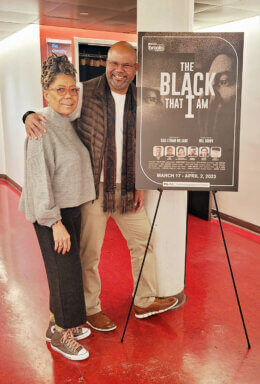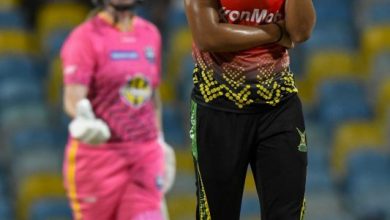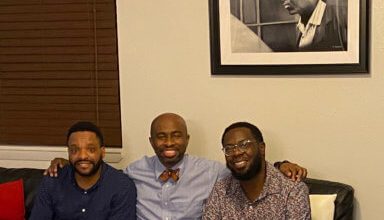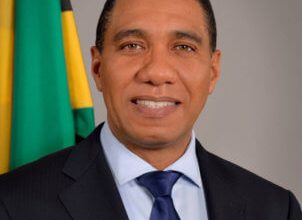‘The Black That I Am’ questions colorism here and there

Playwright Karl O’Brian Williams felt compelled to address a dilemma he experienced soon after migrating to New York City, COVID-19 helped to quiet the noise enabling a productive pandemic period he capitalized on by putting pen to paper to write a series of vignettes that expresses the foibles of his cultural heritage.
Born in 1975, Williams is one of the creative members of BRAATA producers that contend nationalism is at the heart of his musical foray. He believes the trappings of pledges, flags and other accoutrements forces reflection on traditions that distinguishes Black Americans from foreign-born Black nationals.
Using themes from a poem, he said stanzas link messages related to nationalism; living in America, identity and ancestry that explore heritage and culture.
Williams tackled the dilemma of identifying practices distinctive of Black Americans as opposed to those inherently considered Jamaican.
Fully cognizant of his cultural heritage, Williams shares in dialogues, monologues and group dancing, scenarios showcasing encounters with the indigenous Black community and how it forced him to question his Blackness.
On completion, an examination of “The Black That I Am” compiles a multi-media presentation of dance, music, soliloquy that also parody contradictions he observed being Caribbean and particularly Jamaican.
Currently showcased at HERE’s Dorothy B. Williams Theater, 145 Sixth Ave. until April 2, six thespians take turns expressing the dichotomy.
Yinka Ade, Sadi Bimwala, Dan’yelle, Nyanda Cammock, Hector Lincoln and Ansi Rodriguez helps in bringing to life the realities faced living in New York City.
If ever “out of many” relevantly applied, director Will Brown adapts the island’s national motto to respond to conflicted questions.
“My father’s grandfather was Irish, his mother was full Indian, on mummy’s side, her maiden name was Henriques and her mother was half-Chinese.”
The dilemma addresses the sentiments of a minority population that by census registers less than 10 percent.
His line expressed frustration of not being represented although impassioned by a banner reflective of green, gold and black.
“The black is the problem” he said, and one some members of the minority populous often feel excluded by its colorism.
Brown who was born in the USA refers to the production as a “conversational piece.”
And when he casts two women in a church setting, the feeling of a full congregation separates a perceived Delilah from a member considered an appropriately-dressed, traditional Christian.
In one pew, African pride prevails with a member wearing head-to-toe kente couture. Watching with colonial reminiscences of a time when conformity bound Sunday worshippers to big, broad, lacy hats, frilly blouses, silk stockings and heeled soles, an elder deplores the continental style of a progressive, modern day faith seeker.
However, when they come face to face, hypocrisy delivers an un-Christianlike embrace.
At times funny, serious, pensive, contemplative, poignant and relevant, every stanza engages audiences to relate to the messages of fear, pride, politics, hypocrisy, sexuality, ex-patriots, ancestry, purpose and Blackness.
Williams believes “there is never been a bad time to talk about Blackness.”
He said with a preponderance of racially-motivated killings here, the topic is always pertinent.
Recently more than a few of the predominantly Caucasian patrons exited saying ‘Black Lives Matter.’




